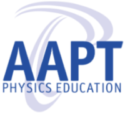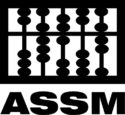History
The first NSSME was conducted in 1977 as part of a major assessment of science and mathematics education commissioned by the National Science Foundation. The study consisted of a comprehensive review of the literature; case studies of 11 districts throughout the United States; and a national survey of teachers, principals, and district and state personnel. A second survey of teachers and principals was conducted in 1985–86 to identify trends since 1977, a third survey was conducted in 1993, a fourth in 2000, a fifth in 2012, and a sixth in 2018.
Reports of the earlier studies can be found here: Reports from Previous National Surveys
Research Questions
- To what extent do science, mathematics, and computer science instruction reflect what is known about effective teaching?
- What are the characteristics of the science/mathematics/computer science teaching force in terms of race, gender, age, content background, beliefs about teaching and learning, and perceptions of preparedness?
- What are the most commonly used textbooks/programs, and how are they used?
- What influences teachers’ decisions about content and pedagogy?
- What formal and informal opportunities do science/ mathematics/computer science teachers have for ongoing development of their knowledge and skills?
- How are resources for science/mathematics/computer science education, including well-prepared teachers and course offerings, distributed among schools in different types of communities and different socioeconomic levels?
Data Collection Procedures
The 2018 NSSME+ was designed to place minimal burden on school staff and to avoid intrusions on the instructional day. No data were collected from students.
Principals of sampled schools were asked to identify a school coordinator, who electronically submitted a list of teacher names and teaching assignments for the purpose of assembling the teacher sampling frame. HRI sent a one-page letter to each sampled teacher, with instructions for completing the web-based questionnaire and unique log-in information. This letter also included all information needed for teachers to make an informed decision about whether or not to participate, as well as a toll-free number to request a paper survey or a phone interview as an alternative to web completion of the questionnaire. The survey was hosted on a secure (https) server.
Sample
The 2018 NSSME+ used a stratified, two-stage probability sample of schools and science, mathematics, and computer science teachers in grades K–12 in the United States. In the first stage, 2,000 elementary and secondary schools were selected within sampling strata with probability proportional to size. In the second stage, 10,000 science, mathematics, and computer science teachers were sampled at predetermined rates to ensure the required number of teachers for domain estimates, such as for particular regions or types of communities.
The target population for the teacher sample consisted of teachers in eligible schools who teach science and/or mathematics and/or computer science. The sampling frame for the teacher sample in each stratum (e.g., high schools) was constructed using lists of teachers and their teaching assignments. Oversampling of teachers of advanced science mathematics, and computer science was done in order to provide separate results for the various subgroups.
Investigators
Eric R. Banilower
Principal Investigator
P. Sean Smith
Co-Principal Investigator
Daniel J. Heck
Co-Principal Investigator
Kristen A. Malzahn
Co-Principal Investigator
Endorsing Organizations
 |  |  |  | ||
 |  |  | |||
 |  |  |
